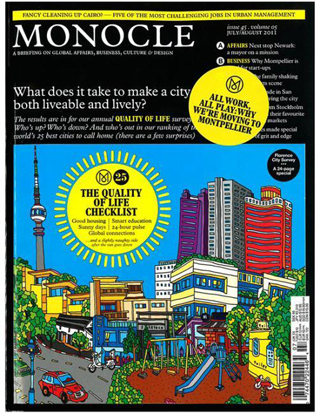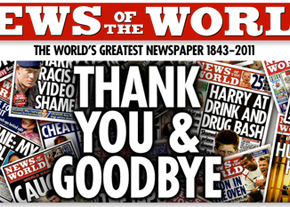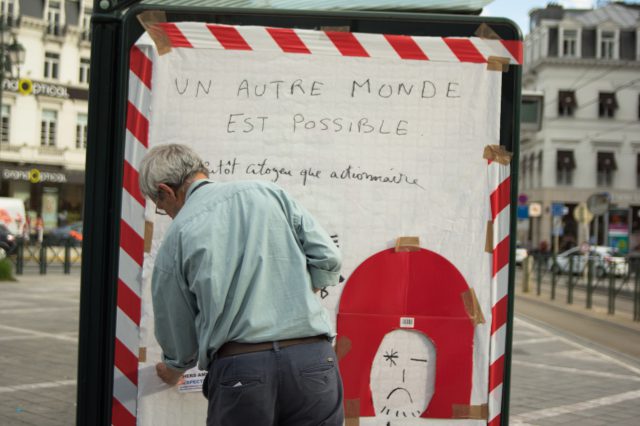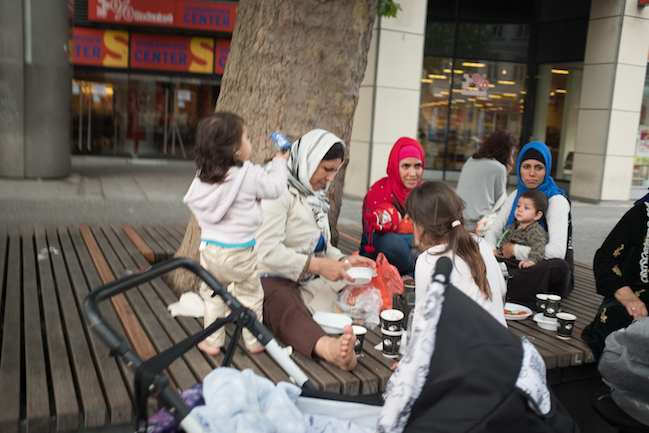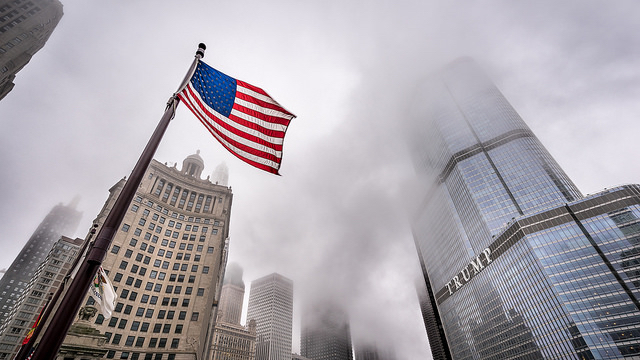When I first noticed Monocle on prominent display near the cashiers at my local Barnes & Noble, I was excited. I’d heard a great deal about the magazine and been to its website. But I had yet to hold a copy in my hands. Sure, I could have subscribed to it, but spending upwards of $100 per year on a publication I’d never seen seemed excessive. And, to be frank, I’m more likely to make that sort of financial outlay for music or films than I am for reading material.
Magazines are impulse items for me, something I buy to pass the time on flights or as a way of celebrating one of my rare windows of truly burden-free time. When I do get one I like, though, I will consume it with a thoroughness the internet almost never inspires. I’ve been known to pore over every single page of an especially good one ten times over. On occasion I’ll run across one of those advertisements that touts the virtues of print media and think, “Well, it certainly is true that I pay a lot more attention to a traditional magazine than I do to publications I read online.” But that insight is followed by its depressing corollary: people like me are increasingly becoming an exception to the rule.
Monocle, though, was clearly made for people like me. While waiting in line to buy a book for my daughter, I flipped through the pages of issue #44. Immediately, I knew that this was the sort of magazine I would read and reread to the point of having every page layout memorized. There was so much to pull me in: a glossy insert on redesigning railway stations, Arab-Spring coverage on Tunisia after the revolution, a spread on a nifty looking hotel in Uruguay, and even an article on “rebranding” Palestine.
It was the sort of content my homebound but geography-obsessed teenage self would have used all his spending money to buy. And since I currently lead a disturbingly similar existence, loving the idea of travel while not being able to afford the time or money to make it happen, I found myself seduced not only by my grown-up investment in print, but my nostalgia for the days when reading The New York Times “Travel” section filled me with dreams of the future instead of regret for the past.
I was surprised to see Monocle for sale, because lately it has become harder and harder for me to find niche magazines. I used to buy them at Borders, which had a better selection than Barnes & Noble, but my local outlet closed after the firm went bankrupt. And Barnes & Noble hasn’t taken up the slack, sharply reducing its stock of periodicals as a consequence of its own financial struggles. Finding something interesting on the shelves has become a major challenge.
Interestingly, these cutbacks have gone hand in hand with a heavy sales pitch for The Economist. Several locations in the store feature displays advertising a hefty discount on subscriptions purchased through Barnes & Noble. They even sport custom text depending on the time of year. Recently, for example, the magazine was being hailed as an ideal Fathers’ Day gift.
While the relationship between Barnes & Noble and The Economist is obviously the result of a deal between the two companies, the sort of collaboration so common in the culture industry these days, it’s reasonable to conclude that the prominence of a British publication in the bookstore, one that makes no concessions to the isolationist and faux innocent sensibilities long identified with the American suburbs, signals a demographic shift of some kind.
Seeing Monocle perched in some of the Barnes & Noble’s most valuable retail space reinforces this conviction. The magazine’s peripatetic coverage and celebration of entrepreneurial capitalism mirror that of The Economist. Unlike the latter, however, Monocle places great emphasis on style. And instead of reporting current events, it concentrates on providing a context in which to understand them.
Outside of its most cosmopolitan and culturally attuned cities — especially New York, Los Angeles and San Francisco — Americans have a largely justified reputation as being both indifferent to style and willfully ignorant of context. Asked to point out countries on a map and say something about them, they consistently perform worse than almost everybody else. Unless a place is in the news a lot, a great many Americans will not express the slightest interest in its existence.
My local Barnes & Noble falls squarely within a suburban zone in which international relations are regarded as the province of conspiratorial para-governmental organizations “Back East”, even though the United States-Mexico border lies only an hour to the south. Over the decade I’ve shopped at that location, the shelves devoted to Christian titles have tripled in size, while sections for History, Philosophy and Cultural Studies have been pared down to compensate.
Aside from the gothed-out teenagers who frequent the bookstore café on weekends, the very idea of style seems anathema to the store’s customers. Indeed, the most common fashion statement its patrons make is to leave a large and heavily tape-flagged Bible open on their tables. All day religious groups meet there, discussing the meaning of their favorite passages along with the misdeeds of the stylishly dressed, cosmopolitan man who their bumper-stickers insist “isn’t my President.” Some of them have even been known to note the similarities between Obama and the Anti-Christ character from the Left Behind series.
But if Monocle is moving copies there despite its $10 price tag and The Economist is treated like Time magazine, there must be a counter-tendency at work in American suburbia. Someone there clearly dreams of a different reality, one where well-informed world travelers have rich debates about the merits of mass transit projects in Madrid and urban gardening in Beirut and, what is more, actually make plans to see those places in person.
It’s telling, I think, that founder and editor-in-chief Tyler Brûlé’s column from Monocle’s latest issue, which tackles the topic “What does it take to make a city both liveable and lively?,” devotes considerable time to the benighted wasteland — at least as he sees it — of American suburbia. 
After explaining that his favorite urban spaces, such as “Zürich’s old town, ancient Kyoto or central Copenhagen,” are welcoming both because their store fronts tend to be only three meters wide and because they have narrower, more pedestrian-friendly streets only four-and-a-half meters across, he turns his attention to more alienating conditions:
If you’re sitting in the middle of Orange County (heaven forbid) knowing full well that 4.5 m is almost the width of a single traffic lane and despairing that there’s not a hope of finding an appropriate enclave to engineer your urban village, worry not. All those strip malls that plague suburbia with their ugly signage, cheap architecture and rag-tag retail mix are ripe for re-engineering. While a fair few are beyond hope and need to be bulldozed, many more simple require the “three-treatment” and re-fit.
Parking lots need to be made into streetscapes to allow for strolling and greenery, retail units should be reconfigured (read: made smaller) to allow for greater intimacy, lurid signage must adhere to a few guidelines and then it’s just a matter of getting the tenant mix right.
These are all good ideas, for what it’s worth. And there are places in the United States where attempts have already been made to implement them. But the insouciant manner in which Brûlé frames them draws attention to Monocle’s most significant blindspot:
If, after all this, you still can’t find urban salvation then buy a plane ticket to Pisa, book into a small, family-run hotel, hire a bicycle and find a little town that suits your needs somewhere along the coast of Versilia. Fresh tomatoes, basil, sun, good coffee, Tuscan wine and long bike rides along cypress-scented lanes are all a good substitute when the big city gets you down.
There’s nothing wrong with this vision per se, which has been the stuff of American cultural fantasy since the mid-1800s. But resorting to it here compromises the can-do spirit of Brûlé’s column in particular and of his magazine more generally.
With its emphasis on right-sized planning, sustainable living, and an appreciation for experiences that are not easy to simulate digitally, Monocle certainly provides a refreshing counterpoint to the doomsayers in traditional print media who only seem capable of counting down the hours until reality becomes nothing more than vast network of data that can be retrieved anywhere and anytime in a fraction of a second. But because the publication’s advocacy inclines in the direction of The Economist’s libertarian worldview, which prefers a minimal state — upholding the rule of law without imposing too many rules of its own — it’s hard to see where the political will to follow through on its outwardly progressive vision will come from.
To its credit, Monocle is relatively sanguine about the transformative power of local government. Issue #45 features a nice piece on mayors who are making a difference, including Newark, New Jersey’s Cory Booker, who was instrumental in getting a huge donation for the city’s schools from Facebook’s Mark Zuckerberg. The magazine has also emphasized the importance of public spending on so-called “non-essential” programs. Consider this statement about Hamburg, Germany, which placed twenty-second in this year’s index of the world’s “most liveable” cities:
Hamburg has to make up for damage in its cultural sector. By cutting funds the old city government has put the city’s reputation for innovative stage productions and well-financed museums at risk.
Overall, though, calls for investment of this sort are outweighed by complaints either about the inefficiency of municipal leadership — “If Montréal consistently ranks high on many quality-of-life listings it is little thanks to the people charged with running it” — or overzealous central planning, as in this pithy takedown of a city on China’s Pearl River:
In downtown Dongguan, the government has made a great effort to create the appearance of a modern city, but some of the developments have an almost Potemkin feel about them. Millions were spent on a gleaming new theater, library and science museum, but the broad concrete plazas surrounding them were so empty of people on stifling weekday afternoon the day Monocle visited, it resembled a scene from North Korea.
Most illuminating to an American like me was a feature on San Francisco, a city I lived near for over a decade and still visit frequently:
The city’s capacity to reinvent itself, the entrepreneurial and fun-loving spirit of its inhabitants and its scenic but fragile setting are ingredients that create a fertile environment of opportunity. Today you’d assume the city (or at least its suburbs) is all about its global brands — Apple, Facebook, Twitter and creative agencies like IDEO and Gensler. Those a little more familiar might point you in the direction of the local food movement and the independent restaurants and coffee bars that have emerged in its wake.
The city’s most recent development doesn’t have an “i” prefix, though. San Francisco is home to a fast-growing community of makers — craftsmen and small manufacturers — spearheaded by a generation who lived through (and in many cases contributed to) the dotcom bubble. They value physical over virtual, small batches over mass production, local over global vending, sustainability over speed and above all quality of life over the potential to make a fortune. It’s a post-industrial, post-digital phenomenon. And it’s a movement that could serve as a model for cities the world over, struggling to reconcile the loss of their manufacturing capabilities with a new generation keen to make and sell manually, not machine operate or, God forbid, outsource.
Aside from offering a tidy précis of Monocle’s company line, this passage is notable both for offering a vision of the city oriented towards its possibilities rather than its problems and for implicitly stating the case for entrepreneurialism as the best way to bring new life to an urban economy.
Later on, this piece highlights the importance of SFMade, an organization devoted to connecting small business owners of this new stamp into a strong-voiced bloc within the city. Co-founders Kate Sofis and Mark Dwight make it sound like the vanguard of a new social movement:
Sofis is quick to point out that SFMade is not an industry trade association but a community service-providing organization. “Our funding mirrors how we operate our programmes,” she says, “and it’s a real collaboration between the city, major corporations and banks who are invested in the city, the manufacturers and the philanthropic public.” Dwight adds: “We’re not going to start building ships or fire up old steel mills but we can inspire and support local makers and challenge the notion that disaffected graduates have no option but to head down a digital route or manufacture in China.”
To be sure, the triangular investment structure of SFMade — local government, banks and the entrepreneurs themselves — is becoming the dominant model in urban planning throughout the developed world, where the invocation of public works almost invariably is concatenated with mentions of private investment. And so long as capitalism reigns unchallenged in the global economic order, that model will surely remain so. But the praise Monocle — and The Economist, for that matter — heaps on such ventures comes at the expense of acknowledging their parasitic relationship to infrastructure largely implemented and maintained by the state.
That reportorial bias goes hand in hand with Brûlé’s admittedly tongue-in-cheek suggestion that the solution to intractable planning problems is a vacation in Tuscany. Here is where Monocle’s genre confusion — is it a news magazine or a travel magazine, a guide for business people or tourists? — proves most symptomatic. If the progress you advocate can only be achieved by top-down changes too centralized for your taste, the only solution is let political recommendations turn into aesthetic judgments. Maybe you can’t make your vision a reality, but you can at least walk around comparing it with the cold, hard facts.
In other words, Monocle seems to promote a kind of future-oriented tourism in which well-heeled flâneurs — who else could afford the travel budget? — pay less attention to historic sites and famous landmarks than they do to the places where a public-private partnership might lead to positive change. Instead of investing their time and money in the past, then, they invest it in the idea of investment itself.
And that’s where the problem of suburbs looms largest. Because whether we study the primarily Muslim banlieues on the outskirts of French cities, the shantytowns that stud the edges of metropolises like Mumbai and Mexico City or those strip mall-saturated wastelands that ring the major cities of the United States, the suburbs are where the state proves to be weakest and are therefore where planning is most difficult to put into action.
The entrepreneurial approach certainly has its charms. Ossified bureaucracies of the public and private sort alike need to be shaken up by people who aren’t afraid to take risks. New ideas are a lot more likely to become a reality if someone is personally invested in their success. But the power of start-ups depends on their relationship to structures already in place. Without that reservoir of support, they wouldn’t be able to make headway. The state of anarchy is the state least amenable to entrepreneurs, despite what some free-market ideologues seem to think.
If Monocle has suburbs on the brain, even as it treats them as the negative space of its reportage, it is surely because of this conundrum. The magazine needs readers like me who live there. But providing them with escapist fantasies they cannot make real is either doing them or the places they live a disservice. Because even if those readers are sufficiently motivated to vacation in Tuscany or perhaps even move there, the problem of the suburbs, where quality of life will never meet Monocle’s high standards, will not go away.
For someone who lacks the resources or inclination to take advantage of such advice, Monocle’s appeal lies in its capacity to kindle hope for change. The magazine does a wonderful job of communicating a positive worldview. The steep global downturn is readily acknowledged, but without the panic so prevalent elsewhere. Opportunities are discerned where most people would only perceive trouble, such as Palestine.
That’s a desirable trait in these dark times. Fear is disabling. Pondering the merits of far-off places can blunt the impact of the relentlessly negative headline news. Surely, if publications like Monocle exist, the world can’t be as bad off as we are led to believe. At a time of radically diminished aspirations, when the majority of people in the developed world would be content to match their parents’ standard of living, much less surpass it, bold visions of globalization at its best are valuable in their own right.
But for someone who has little chance of becoming a world traveler anytime soon — someone like me, to be honest — the magazine’s relentless optimism can grow tiresome. And so can its editorial biases. I admire Monocle’s attentiveness to “green” issues, but it contributes to a high-mindedness that is hard for residents of automobile-dependent suburbia to handle. More broadly, the money required to be the magazine’s kind of traveler is a luxury that few of us can afford. That reality check may not leave me hopeless, but it sure makes my hopes for the future harder to bear.
